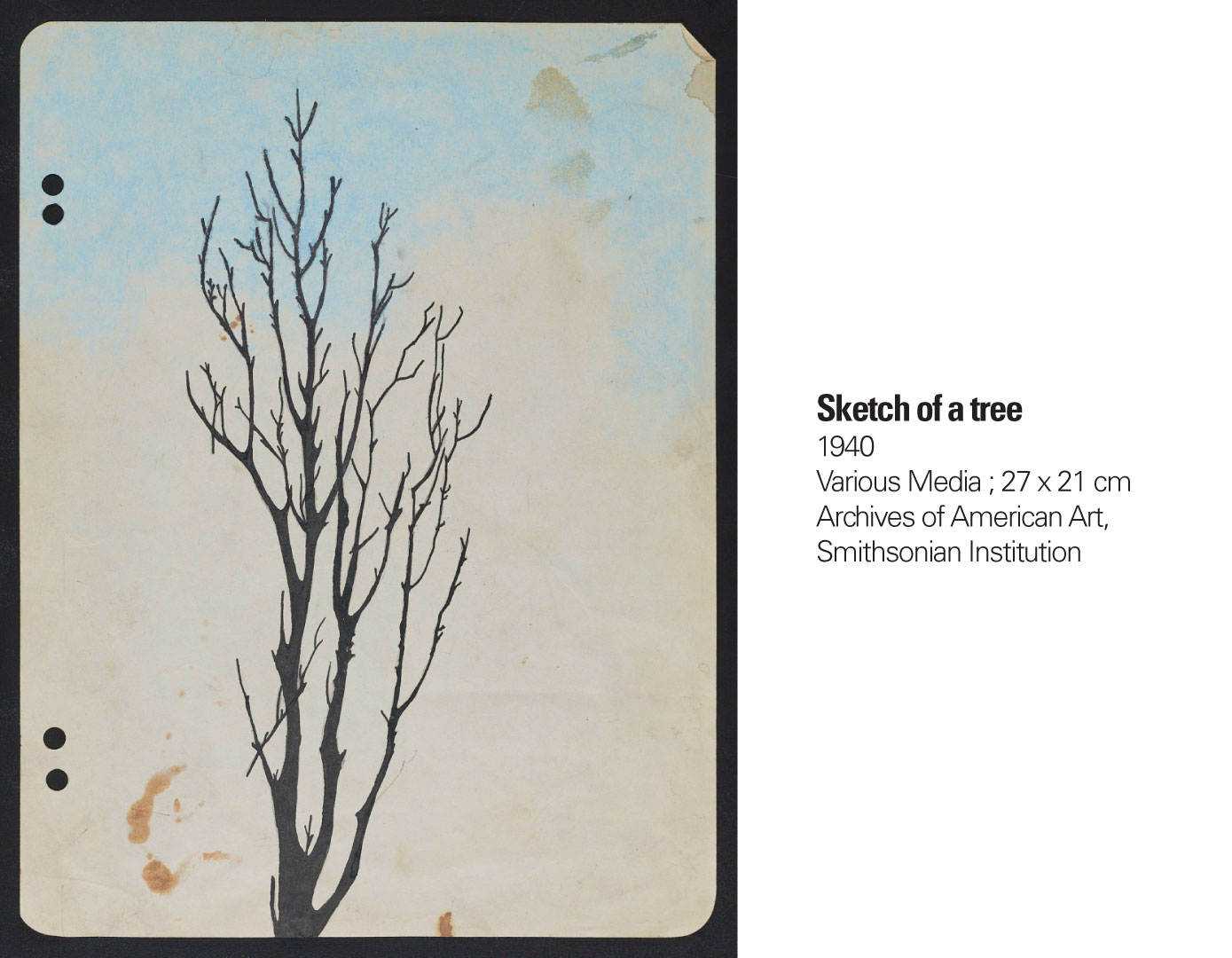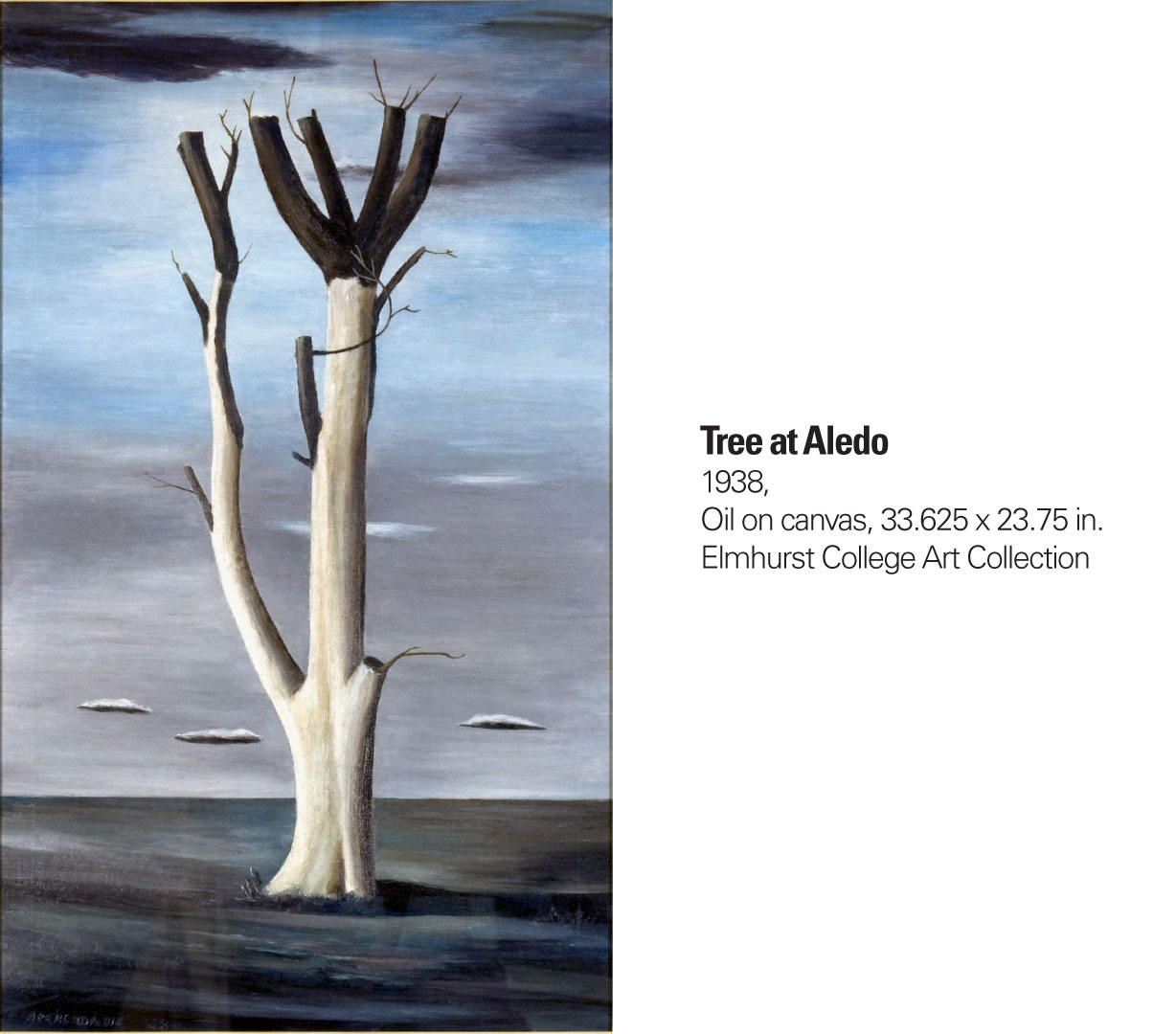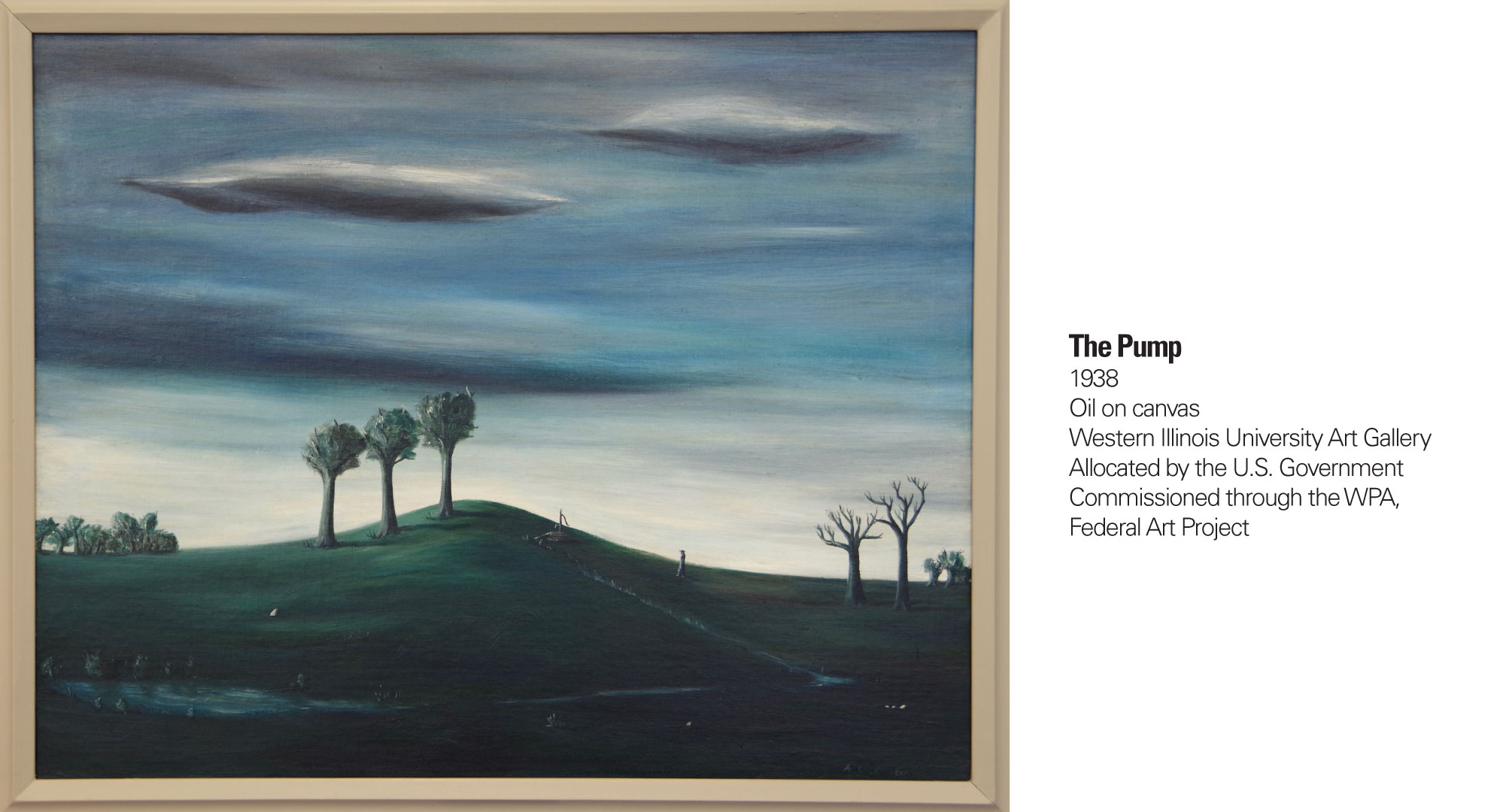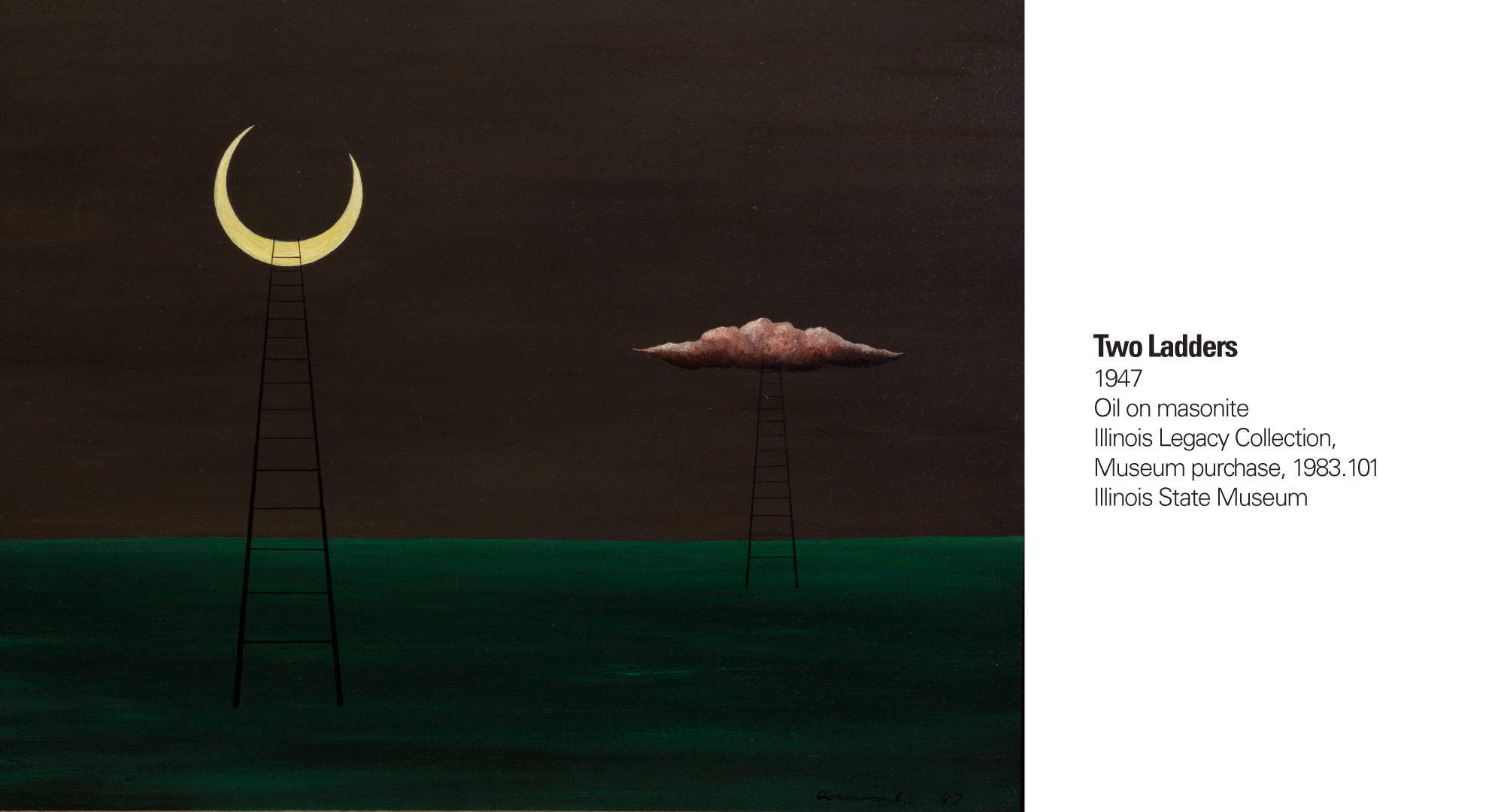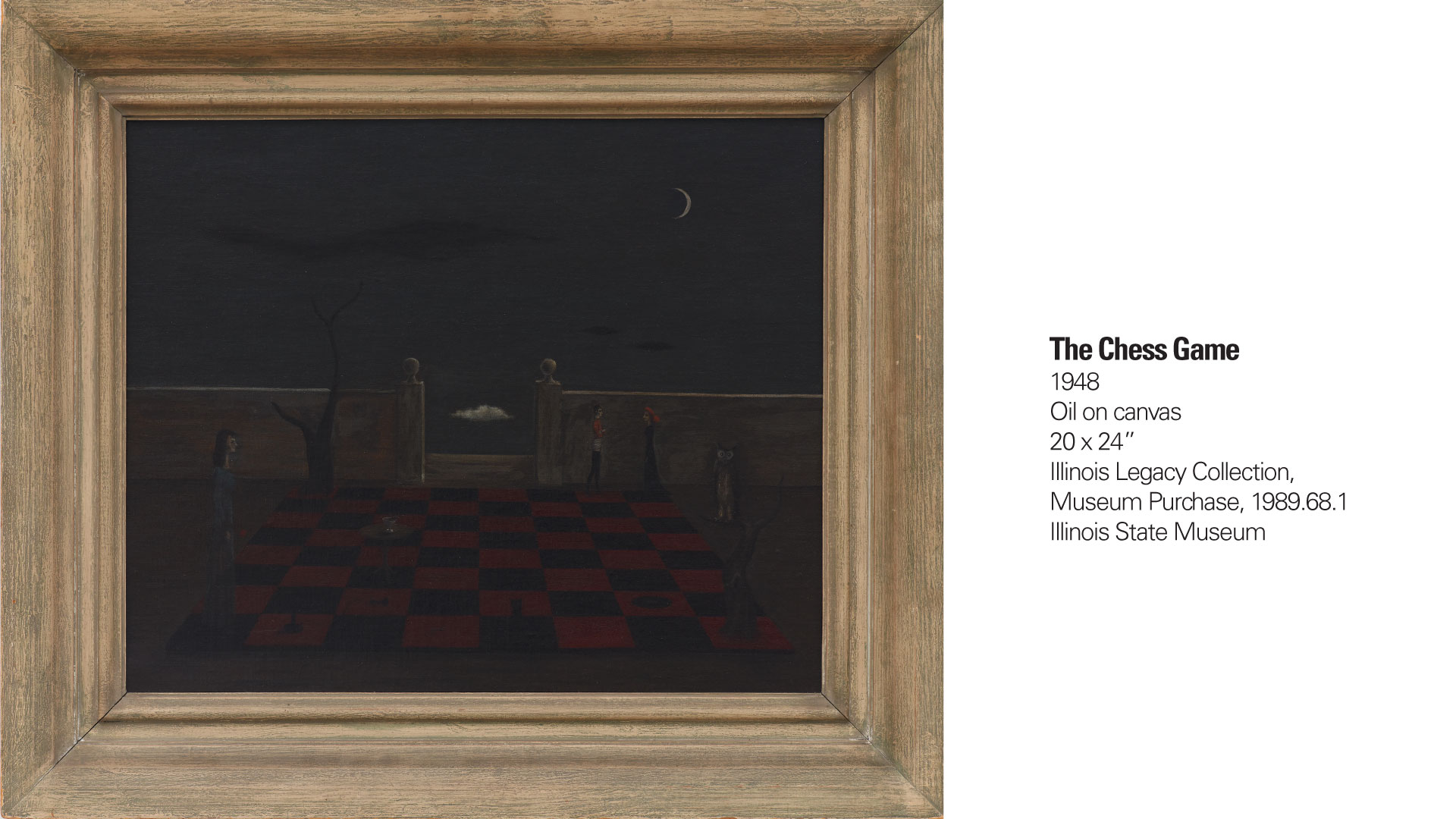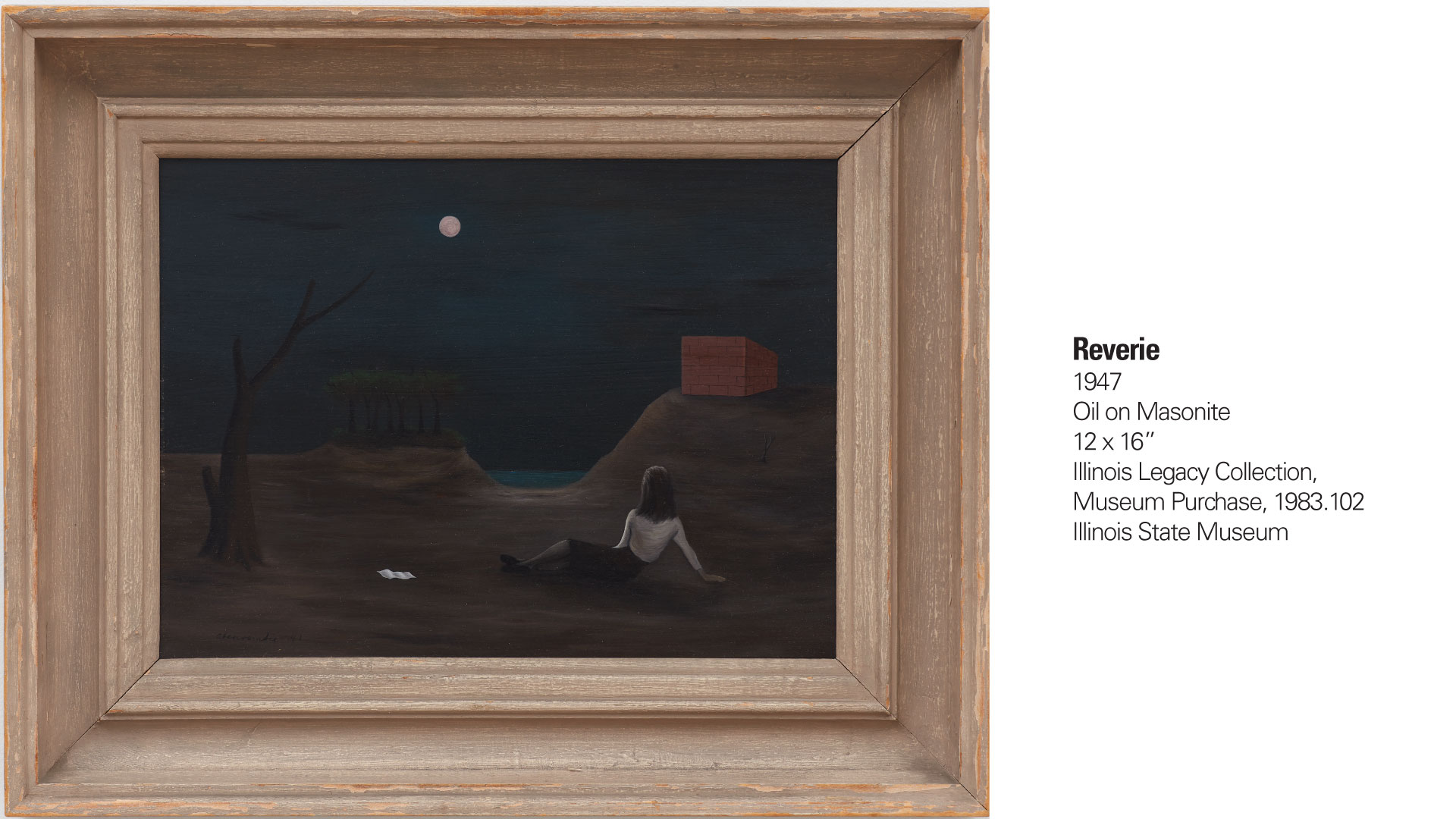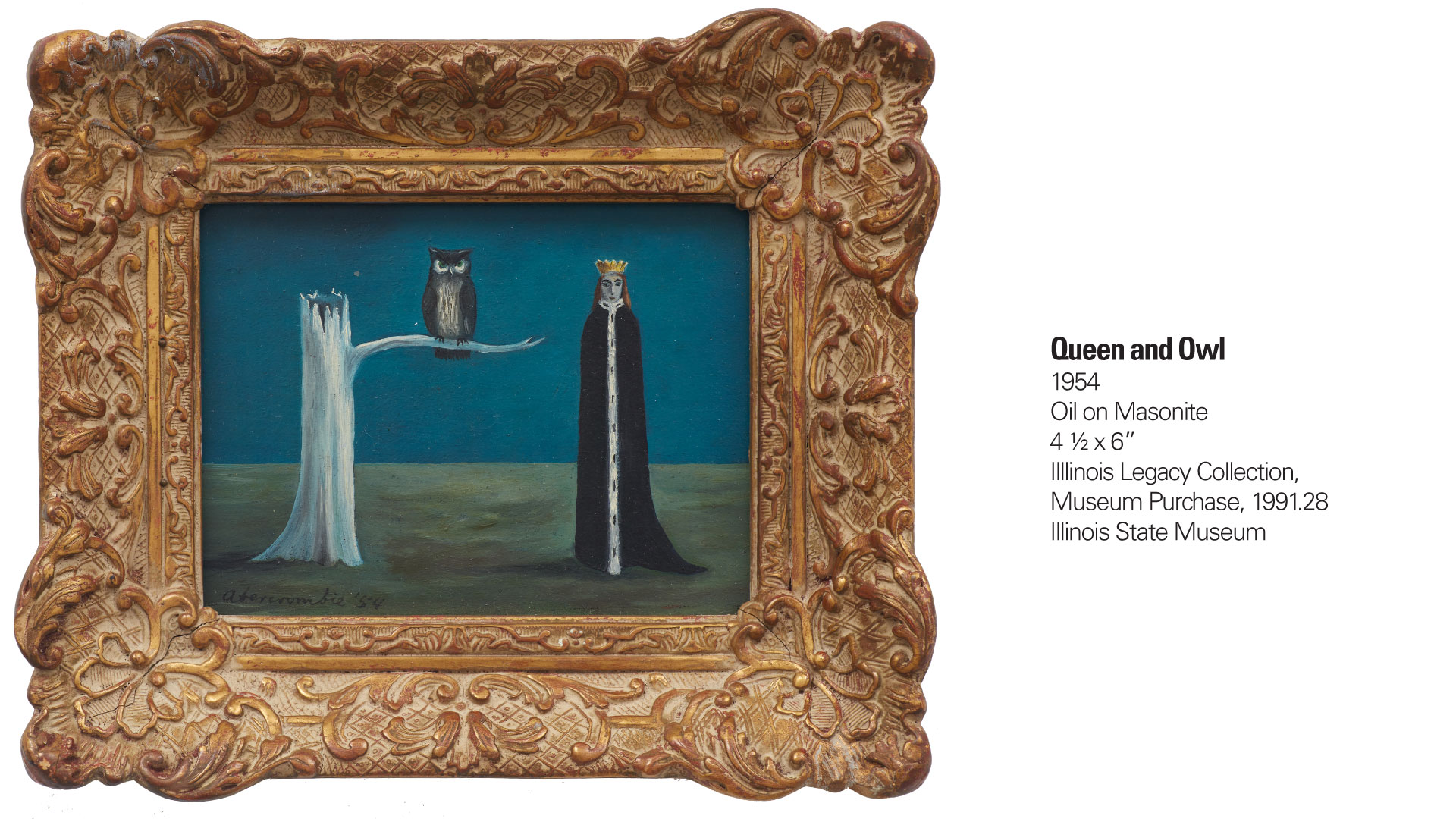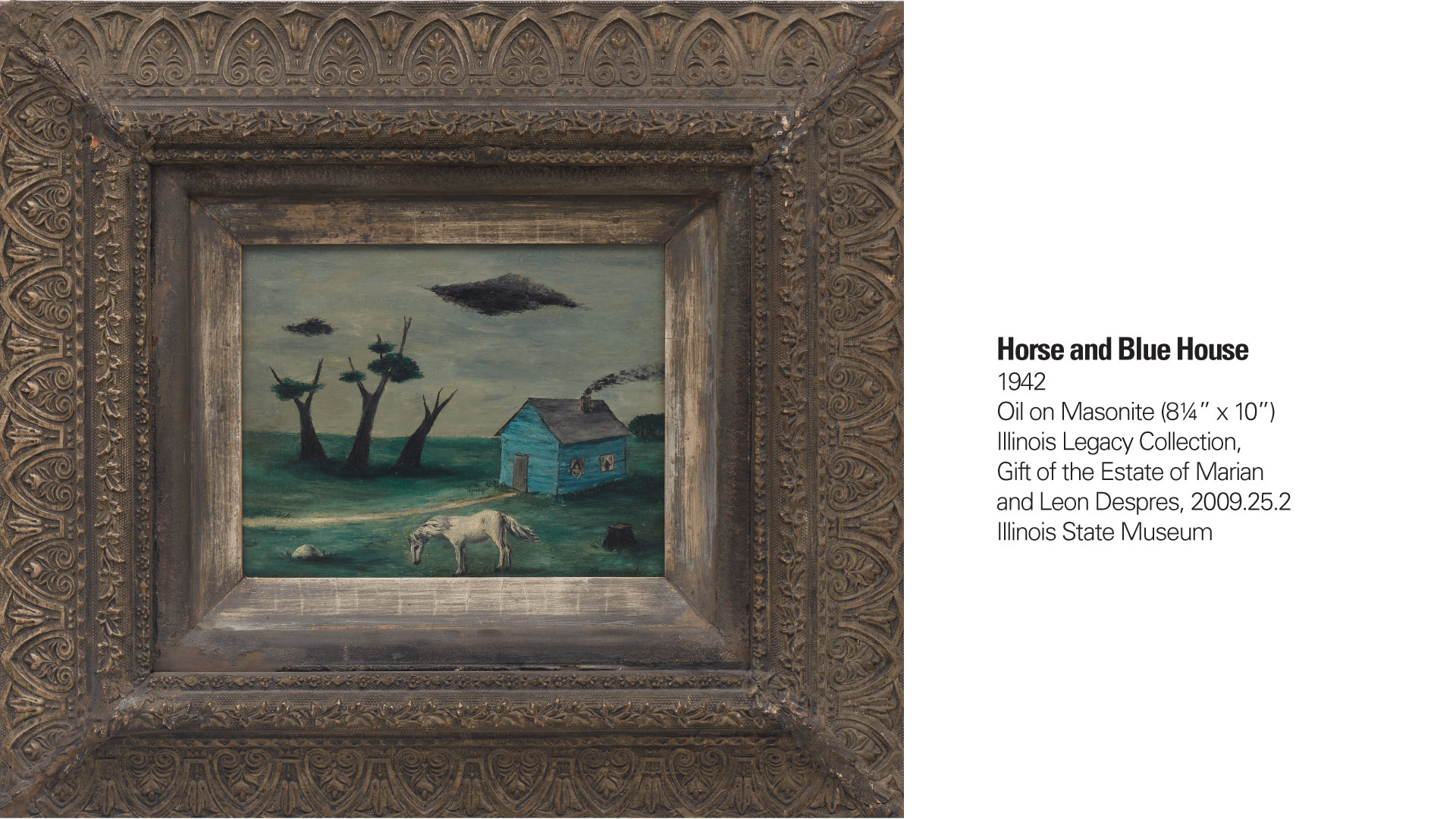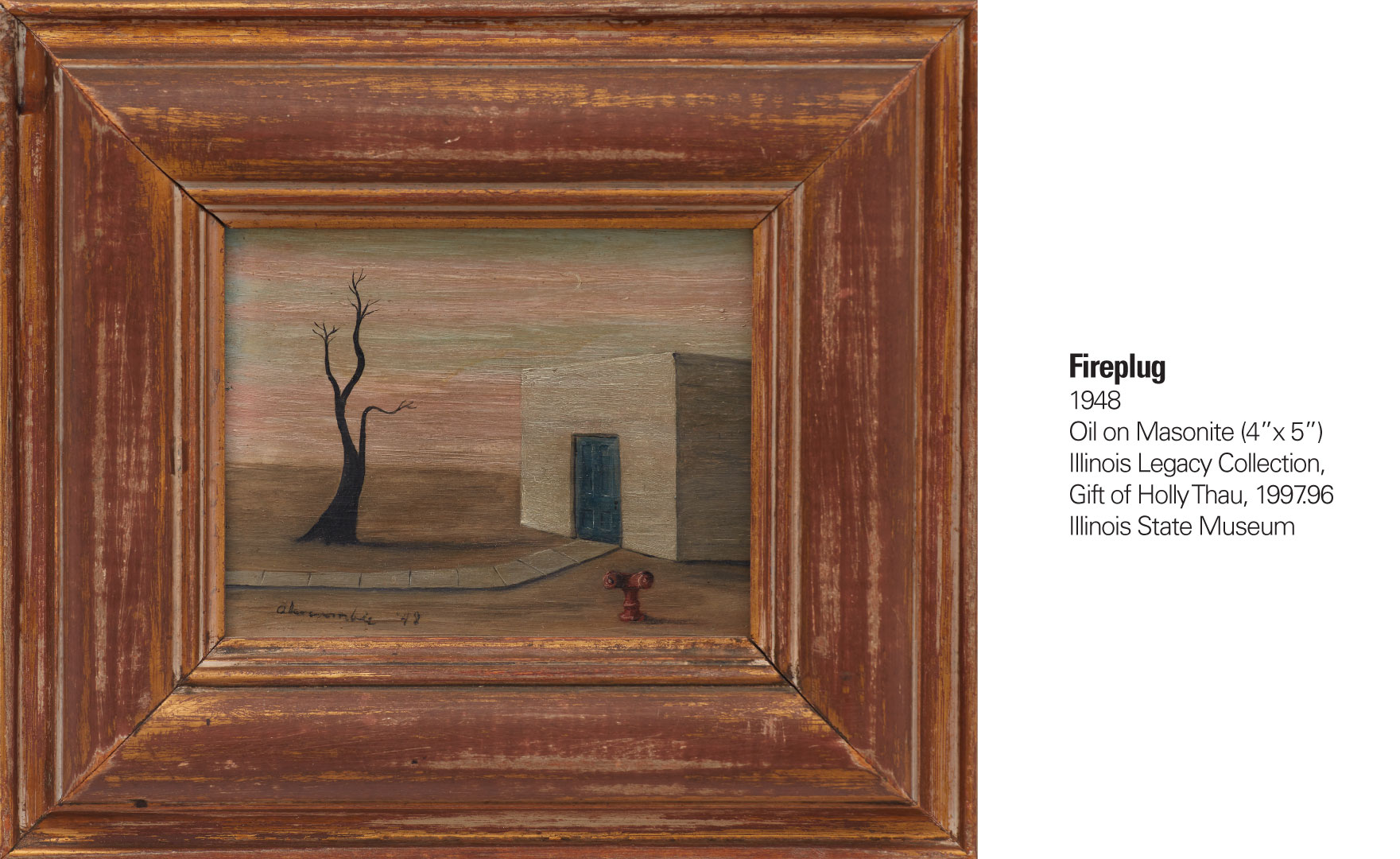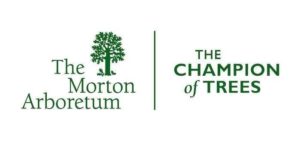Gertrude Abercrombie
1909, Austin, TX – 1977, Chicago, IL
It was the perfect vehicle to represent “the American Scene”, considered the best kind of subject matter during this period of increasing nationalism and xenophobia.
– Susan Weininger, Professor Emerita, Roosevelt University
Gertrude Abercrombie was an urban woman who spent most of her life in Chicago, enjoying and contributing to the vitality she found there. Her life was inspired by things one could find in abundance in the city: artists, writers, musicians, particularly jazz musicians, parties that lasted through the night, and the diversity of people and experiences she encountered. Her work includes many images of her austere room, and still life paintings filled with objects so personal as to be stand-ins for the artist herself.
At the same time, Abercrombie also addressed the landscape, inspired primarily by the natural world she experienced in Aledo, the small western Illinois town where her father was raised and where many members of his extended family lived. As an only child of strict parents, the summer months that she often spent in Aledo offered her the warmth of grandparents, aunts and uncles, and the cousins with whom she formed close sibling-like relationships.
When she began to work for the government supported Illinois Art Project during the depression, she turned to this landscape for inspiration. It was the perfect vehicle to represent “the American Scene”, considered the best kind of subject matter during this period of increasing nationalism and xenophobia. Her landscapes are range from chillingly austere to an almost lush quality missing from her more urban work. She populated her natural environments with characteristic trees of her own invention, mysterious clouds, cats and owls, often lit by the moon with which she felt an intimate connection. The uncomplicated positive feeling associated with Aledo is reflected in some of these paintings, dovetailing beautifully with the regionalism and glorification of the American Midwest so prevalent in American art of the 1930s and 40s.
Susan Weininger, Professor Emerita, Roosevelt University
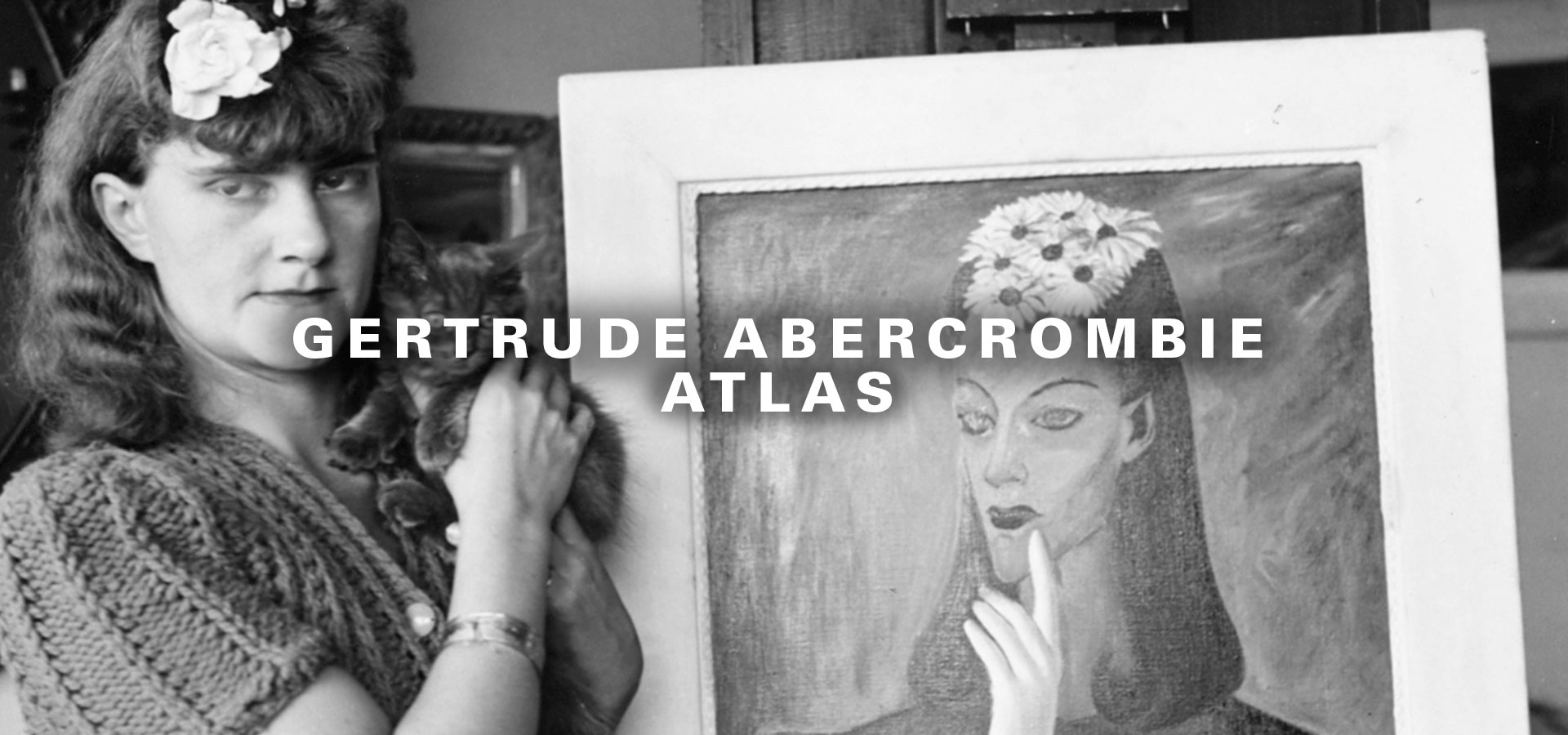
Elm
Botanical name: Ulmus americana
Common Name: American elm
Family (Botanic): Ulmaceae
Native Locale: North America, Illinois, Chicago
Red Oak
Botanical name: Quercus rubra
Common Names: northern red oak, red oak
Family (Botanic): Fagaceae
Native Locale: Chicago area, Illinois, North America
Crabapple
Botanical name: Malus ‘prairifire’
Common Names: flowering crabapple
Family (Botanic): Rosaceae
Native Locale: Europe, Asia, North America
